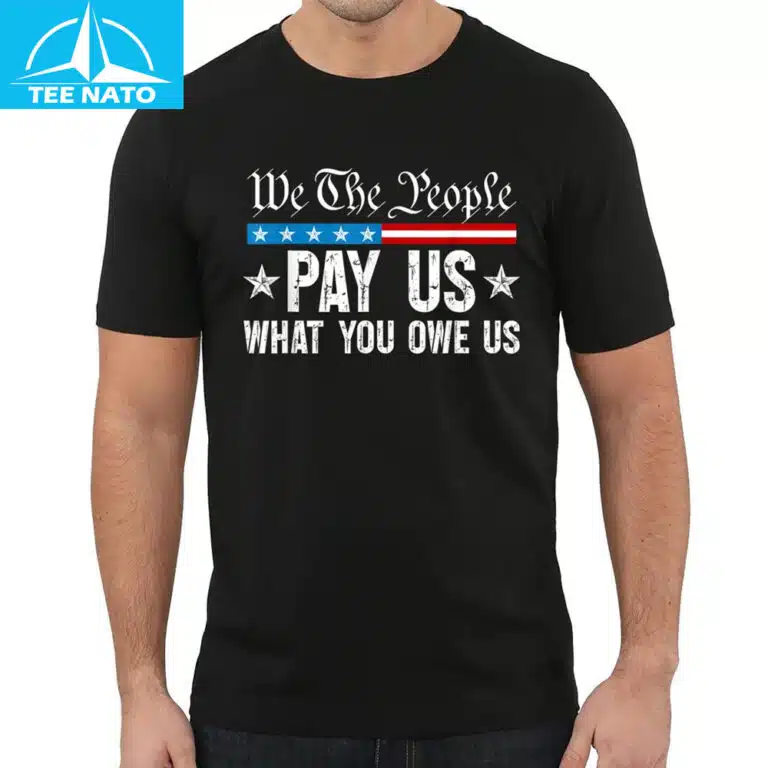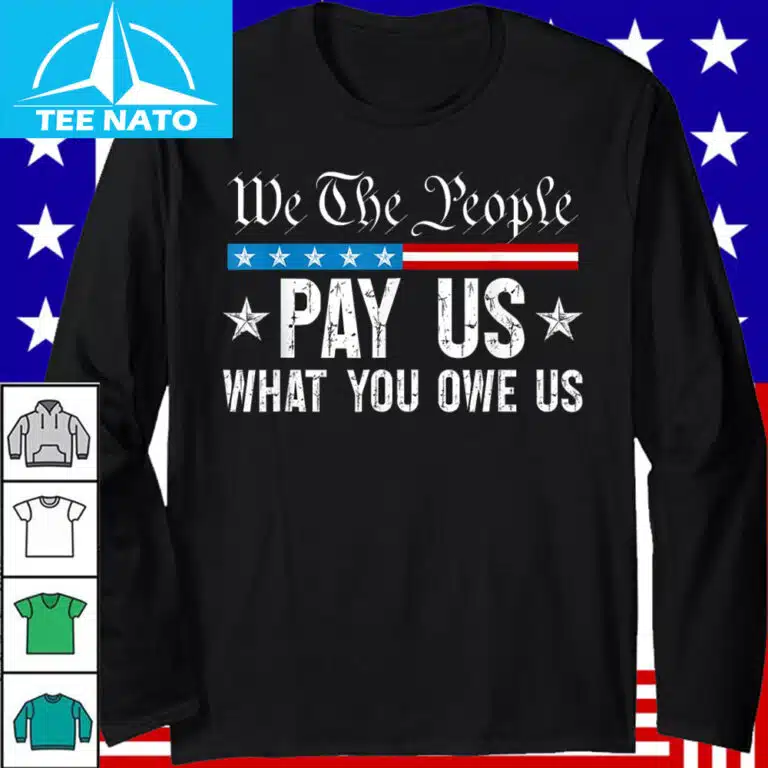Reparations Now: The “Pay Us What You Owe Us” Social Justice Apparel
The “Pay Us What You Owe Us” Social Justice Apparel is more than just clothing—it’s a powerful declaration advocating for economic equity and reparative justice. This compelling garment functions as a visible protest, igniting crucial conversations about systemic inequality and the historical obligations to marginalized communities. Whether showcased at demonstrations, in everyday settings, or as part of a broader collective effort, this shirt amplifies voices persistently calling for fairness.
The “Pay Us What You Owe Us” Social Justice Apparel holds profound meaning, deeply embedded in past and ongoing battles for justice. It represents a clear directive to acknowledge and correct the economic imbalances that have persisted across generations.
The concept of reparations is not a recent invention. From the horrors of the transatlantic slave trade to discriminatory practices like redlining, systemic economic oppression has left enduring scars. The shirt’s statement echoes calls for restitution, whether through official reparations programs or holding corporations accountable. By wearing it, individuals align themselves with significant movements such as Black Lives Matter and various labor rights campaigns that tirelessly advocate for long-overdue compensation.

Clothing has always been a powerful vehicle for dissent—from the sashes of suffragettes to the impactful Black Power fist tees. The “Pay Us What You Owe Us” Social Justice Apparel proudly continues this legacy, transforming the wearer into a visible advocate for change. Unlike generic slogans, this apparel explicitly demands action, making it an effective instrument for public education and fostering community unity.
Wearing this apparel isn’t solely about making a public declaration—it’s about reclaiming individual agency and self-respect. For many, it serves as a crucial means to assert their dignity when faced with systemic neglect. It also actively cultivates community, as wearers readily identify each other as allies in the ongoing struggle for economic justice.

To maximize its effectiveness, the “Pay Us What You Owe Us” Social Justice Apparel should be worn with deliberate intent. Here’s how to strategically utilize its power in diverse environments.
During protests and marches, the apparel functions as a powerful symbol of unity. Combine it with prominent signs or synchronized chants to visually and audibly reinforce the message. It also significantly assists media in easily recognizing and amplifying the core cause being championed.
Wearing the apparel casually ensures the conversation continues beyond organized protests. Be prepared to articulate its profound meaning when questioned—this turns everyday interactions into valuable educational opportunities. It holds particular significance in professional environments where economic disparities are glaringly evident.
Share compelling photographs of yourself wearing the apparel with relevant and impactful hashtags. Use your captions to effectively inform your followers about the importance of reparations or the realities of wage gaps. Remember to tag influential organizations or key figures who can help spread the message more broadly.
Not all protest clothing is equally impactful. The “Pay Us What You Owe Us” Social Justice Apparel stands out due to its directness and inherent urgency.
Many shirts feature generalized phrases like “Equality Now” or “Be the Change.” While these sentiments are positive, they often lack the specific and urgent demand for economic justice that this apparel so boldly embodies. Its remarkable clarity makes it significantly harder to disregard or misinterpret its core message.
Some activist apparel relies heavily on symbolic imagery, such as raised fists or broken chains. While these can be powerful, they sometimes necessitate specific cultural context for full comprehension. The “Pay Us What You Owe Us” Social Justice Apparel, in contrast, leaves no room for ambiguity—its message is immediate, direct, and unmistakable.
Luxury brands occasionally release “socially conscious” themed apparel, often accompanied by prohibitive price tags. This approach frequently feels performative, catering more to consumer trends than genuine causes. In stark contrast, this apparel is typically affordable and rooted in grassroots movements, ensuring crucial accessibility for the very communities it aims to represent.
While wearing the “Pay Us What You Owe Us” Social Justice Apparel is a powerful initial step, achieving real change demands sustained, comprehensive effort. Here’s how to deepen your impact and contribute meaningfully to the movement.
Actively investigate the complex history of economic injustice within your own community. Share informative articles, insightful books, or thought-provoking documentaries that delve into the topics of reparations and systemic wage gaps. Consider organizing discussions to thoroughly unpack these complex issues with your friends, family, or colleagues.
Make financial contributions to reputable organizations actively advocating for reparations, such as the National Coalition of Blacks for Reparations in America (N’COBRA). Advocate strongly for local policies that directly address wealth disparities, including the implementation of municipal reparations programs. Hold corporations accountable for historical injustices by supporting relevant boycotts or engaging in shareholder activism.
Prioritize and center the narratives of those directly affected by economic injustice. Use your personal or professional platform to prominently highlight the work of activists, scholars, and community leaders from these affected groups. Crucially, avoid speaking over them—instead, consistently uplift and champion their demands and proposed solutions.
The “Pay Us What You Owe Us” Social Justice Apparel is a potent emblem in the ongoing fight for economic fairness, seamlessly blending powerful fashion with fervent advocacy. By truly understanding its profound symbolism, utilizing it strategically, and complementing it with tangible, actionable steps, wearers can transform a simple garment into a dynamic catalyst for real, lasting change. This apparel serves as a vital reminder that justice is not merely an abstract concept—it is a long-overdue debt that must be settled.
POSTER SEO_SIBATOOL